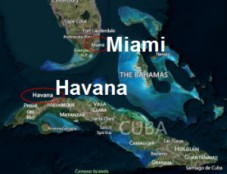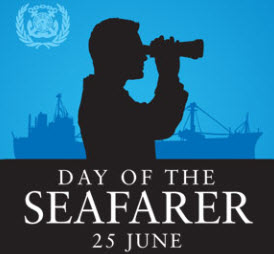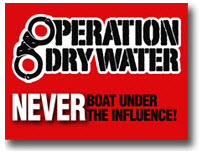 Boating season is in full swing and families everywhere are enjoying time on the water, but what if that time is marred by your boat hitting rocks or other unseen debris in the water? What if rocks or other debris get sucked into the intake? What should you do? How do you keep your family and your boat safe?
Boating season is in full swing and families everywhere are enjoying time on the water, but what if that time is marred by your boat hitting rocks or other unseen debris in the water? What if rocks or other debris get sucked into the intake? What should you do? How do you keep your family and your boat safe?
Life Jackets and Personal Flotation Devices (PFDs)
 Always have enough life jackets for every crew member and passenger on board. In many states here in the U.S., children under a certain age must were life preservers at all times while on board and on the docks. Adults and crew members may want to always wear theirs as well to set a good example for any minors.
Always have enough life jackets for every crew member and passenger on board. In many states here in the U.S., children under a certain age must were life preservers at all times while on board and on the docks. Adults and crew members may want to always wear theirs as well to set a good example for any minors.
No one wants to hit an object in the water accidentally, but even the most diligent of captains may not see hidden debris under the water. Wearing a life jacket ensures, if the boat is jarred violently or if the engine stalls suddenly, anyone knocked overboard will be much safer.
Never BUI (Boating Under the Influence)
 Remember to “launch like a boss” and “dock like a boss;” never boat under the influence (BUI). Per Operation Dry Water, alcohol:
Remember to “launch like a boss” and “dock like a boss;” never boat under the influence (BUI). Per Operation Dry Water, alcohol:
- is the leading contributing factor in fatal boating accidents
- was the leading factor in nearly one-fourth of recreational boating deaths (21%) in 2014
If You Do Get Stuck
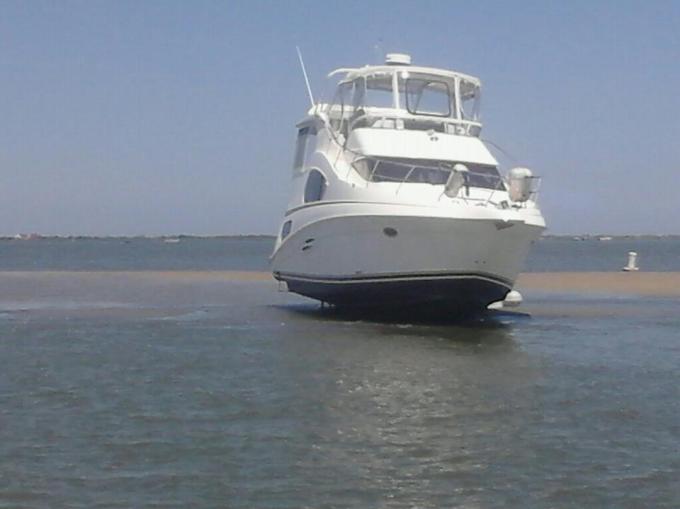 If you do get stuck on some unseen debris or rocks, or worse yet if you run aground, don’t try to force the boat over the spot. You might wind up just getting yourself stuck further. Neither should you try to back off the debris immediately either. You may wind up sucking bits and pieces, mud, or plant-life into the engine, which could lead you to our next two pointers; you may have to replace your impeller or drive shaft as a result.
If you do get stuck on some unseen debris or rocks, or worse yet if you run aground, don’t try to force the boat over the spot. You might wind up just getting yourself stuck further. Neither should you try to back off the debris immediately either. You may wind up sucking bits and pieces, mud, or plant-life into the engine, which could lead you to our next two pointers; you may have to replace your impeller or drive shaft as a result.
First, make sure the boat isn’t leaking or taking on water. If you’re sure you can back up safely without damaging the engine (i.e., nothing will get sucked into the engine that shouldn’t), reverse with the engine carefully or better yet with a mainsail if possible. It’s even better to wait for the tide to rise and raise the boat off the spot, if you can. If there’s no tide or the tide isn’t in your favor, you may have to ask another boat or call for a tow.
Keep an Extra Impeller or Two On-Board
 Impellers are small, yet integral parts of your boat’s engine. Keep an extra impeller or two on hand at all times on the boat. Typically, they’re small enough that an extra impeller or two won’t prohibit keeping any other safety gear. Power & Motoryacht magazine advises to keep at least one extra impeller “for each and every pump onboard” your boat. After all, Globe Marine Impellers are reasonably priced and affordable. Besides, it beats waiting for a tow!
Impellers are small, yet integral parts of your boat’s engine. Keep an extra impeller or two on hand at all times on the boat. Typically, they’re small enough that an extra impeller or two won’t prohibit keeping any other safety gear. Power & Motoryacht magazine advises to keep at least one extra impeller “for each and every pump onboard” your boat. After all, Globe Marine Impellers are reasonably priced and affordable. Besides, it beats waiting for a tow!
Install a Globe Marine DRIVESAVER®
 If rocks or small debris do make their way into the engine, replace the impeller. Also, be sure to check that the drive shaft isn’t damaged, bent, or broken. A great way of preventing the latter is to install a Globe Marine DRIVESAVER®. Globe Marine DRIVESAVER®s can spare your engine and transmission in the event that foreign objects make their way past the intake and into the engine, potentially saving you costly repairs or even having to replace the transmission.
If rocks or small debris do make their way into the engine, replace the impeller. Also, be sure to check that the drive shaft isn’t damaged, bent, or broken. A great way of preventing the latter is to install a Globe Marine DRIVESAVER®. Globe Marine DRIVESAVER®s can spare your engine and transmission in the event that foreign objects make their way past the intake and into the engine, potentially saving you costly repairs or even having to replace the transmission.
See below for what can happen without any protection for your drive shaft installed:
 |
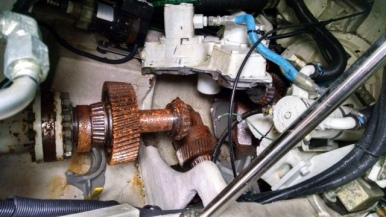 |

Globe Marine has a comprehensive, online search tool to find just the right DRIVESAVER® to fit your boat’s engine:

References
- https://answers.yahoo.com/question/index?qid=20080511164952AAjc7IQ
- http://boatsafe.com/nauticalknowhow/aground.htm
- http://www.globemarine.com
- http://www.operationdrywater.org/
- http://www.powerandmotoryacht.com/engine/essential-spare-parts-keep-your-boat#.V2QffaJ-7fe
- http://sailing.about.com/od/CopingwithEmergencies/a/What-To-Do-If-You-Run-Aground-In-A-Sailboat.htm
- http://www.wikihow.com/Stay-Safe-While-Boating
- https://youtu.be/9qHdPhkSSNQ
- https://youtu.be/FPeetFWRVxo









